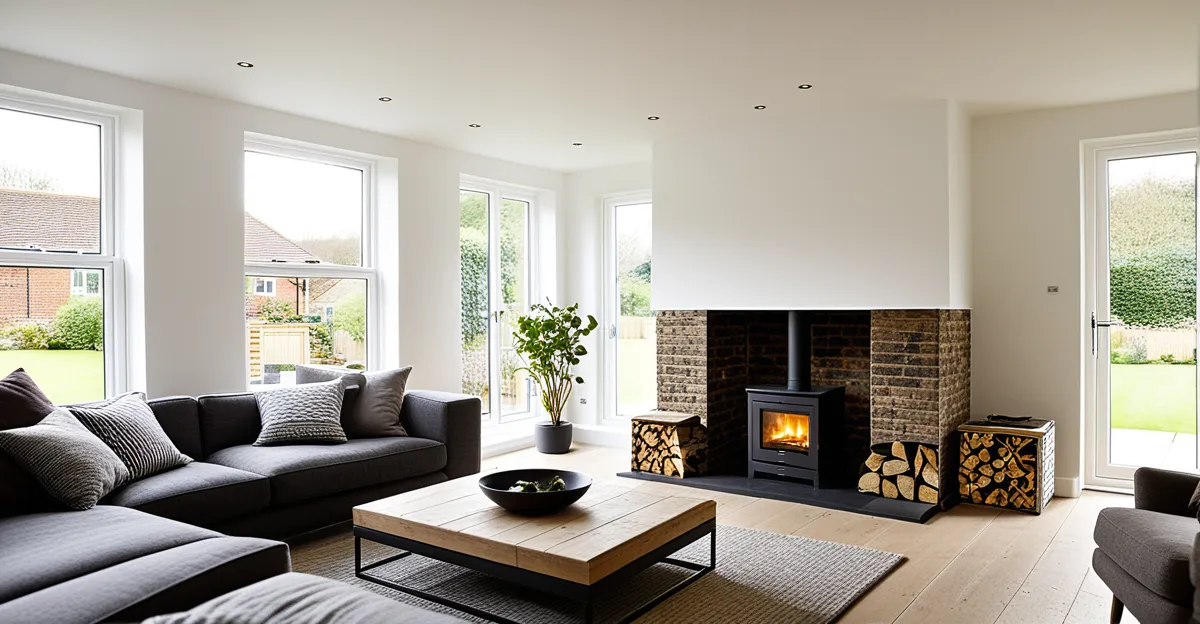Essential First Steps for Energy-Efficient UK Homes
Beginning your journey toward energy-efficient homes starts with a thorough energy audit. This audit pinpoints where heat escapes or electricity is wasted, making it easier to target improvements. In the UK, understanding local weather plays a crucial role; damp, chilly winters and unpredictable rain affect heating needs more than in milder climates. For example, poorly insulated walls or single-glazed windows can significantly increase energy consumption during cold spells.
Setting achievable energy efficiency goals is vital. These might range from reducing energy bills by a set percentage to upgrading insulation within a year. Clear goals keep motivation high and enable tracking progress effectively.
In parallel : How can you transform your UK home to boost comfort and efficiency?
Smartly prioritising actions based on audit results ensures that initial efforts yield the most impact. For instance, sealing draughts around windows and doors or upgrading to energy-efficient lighting may present affordable starting points. These practical steps align with UK home energy tips widely recommended by energy advisors.
By focusing on targeted improvements, understanding the UK’s climate impact, and defining clear objectives, homeowners can embark confidently on starting energy saving in a way that’s both manageable and effective.
Also to see : How Do You Maximize Comfort in a Small UK Home?
Upgrading Insulation and Draught-Proofing
Improving insulation in the UK is crucial to enhancing home heat retention and cutting energy waste. Choosing the right insulation depends on your property type and climate demands. For walls, cavity wall insulation is common in many UK homes and can reduce heat loss by up to 35%. Loft insulation also plays a significant role, preventing warm air from escaping through the roof. Floor insulation further aids in maintaining consistent indoor temperatures, especially in older homes with suspended timber floors.
Draught proofing is an effective, low-cost method to prevent cold air from entering and warm air from escaping through gaps around doors and windows. Simple measures such as sealing letterboxes, installing brush strips, or using draught excluders at the base of doors can lead to immediate improvements in comfort and energy savings.
When considering costs, the payback period for insulation upgrades typically ranges from 3 to 10 years, depending on the material and the size of your home. Though initial costs vary, the long-term benefits include reduced heating bills and enhanced home comfort—making insulation and draught proofing key elements of sustainable, energy-efficient homes in the UK.
Integrating Smart Technology for Better Energy Management
Smart thermostats UK homeowners install offer precise control of heating schedules, adapting automatically to daily routines. This leads to notable energy savings without sacrificing comfort. Automated heating controls adjust temperature based on occupancy and weather conditions, ensuring heating runs only when needed.
Smart home energy devices go beyond thermostats. Sensors monitor real-time energy use, allowing homeowners to identify and reduce wastage effectively. For example, smart radiator valves enable room-by-room temperature control, preventing overheating in unused spaces.
In practical terms, UK residents using smart thermostats have reported reducing heating energy consumption by up to 20%. Such devices often integrate with smartphone apps, providing remote access and detailed usage reports. This empowers informed decisions about when and how to save energy.
Choosing the right smart tech depends on home size and existing heating systems. While initial costs vary, many find the return on investment quick due to lower energy bills. Additionally, some government energy schemes may support smart device installation, further encouraging their adoption.
By integrating smart thermostats UK homeowners create more efficient heating environments, aligning daily living with cost-effective energy management strategies—illustrating the tangible benefits of embracing smart home energy solutions.
Essential First Steps for Energy-Efficient UK Homes
Starting energy saving in energy-efficient homes begins with a detailed energy audit. This survey identifies problem areas where heat escapes or electricity is wasted, guiding targeted upgrades. Many UK home energy tips stress the importance of this initial step because it provides a clear roadmap tailored to each dwelling.
Understanding the UK’s unique weather impact is crucial. Frequent dampness and cold winters increase heating demand, so recognising how these conditions affect your home’s energy use helps in making informed decisions. For example, heat loss through poorly insulated walls or windows is significantly amplified in the UK climate.
Setting achievable, quantifiable energy efficiency goals supports sustained motivation and progress tracking. These goals could range from a percentage reduction in heating bills to completing insulation upgrades within a set timeframe. Clear targets allow homeowners to prioritise interventions and evaluate success effectively.
In summary, conducting an energy audit, factoring in UK-specific weather effects, and setting realistic objectives form the foundation of practical, effective strategies for energy-efficient homes and successful UK home energy tips.
Essential First Steps for Energy-Efficient UK Homes
Starting energy saving effectively begins with conducting a comprehensive energy audit. This process identifies critical areas where heat escapes or electricity is unnecessarily consumed, forming the basis for tailored UK home energy tips. An energy audit covers elements such as insulation quality, draughts, heating controls, and lighting efficiency, spotlighting where improvements will yield the most significant savings.
Understanding the impact of UK-specific weather is equally vital. The UK’s cold, damp climate increases heating demand and elevates heat loss risks through poorly insulated surfaces and gaps. Recognising this helps homeowners prioritise upgrades, for example, focusing on sealing draughty windows or enhancing loft insulation, both common issues highlighted in many energy audits.
Setting achievable energy efficiency goals ties these insights together. Goals may include reducing energy bills by a specific percentage within a year or completing insulation upgrades before the next winter. Clear, measurable objectives motivate continued progress and help evaluate which interventions are successful.
In sum, starting energy saving in energy-efficient homes depends on a structured approach: detailed audits, climate-aware assessments, and defined goals. This strategy ensures practical, cost-effective improvements suited to the UK’s unique conditions.
Essential First Steps for Energy-Efficient UK Homes
Beginning starting energy saving with a comprehensive energy audit is essential for creating truly energy-efficient homes. This audit precisely identifies areas where heat escapes or unnecessary electricity is used, such as poorly insulated walls, gaps around windows, or inefficient lighting. UK home energy tips consistently emphasise this step because without accurate data, efforts may focus on less impactful improvements.
How does the UK climate affect energy use? The often cold and damp weather increases heating demand, especially during long winters. This climate means heat loss through windows, walls, and roofs is a bigger problem here than in milder regions. Knowing this helps homeowners prioritise fixes that combat these losses directly, making their homes more resilient and cheaper to heat.
What goals should be set? Achievable energy efficiency goals include quantifiable targets—such as reducing energy bills by 15% over a year or completing critical insulation upgrades before the next heating season. Setting these clear, measurable goals encourages steady progress and helps track success.
In summary, effective starting energy saving in the UK depends on a detailed audit, understanding local weather demands, and setting realistic targets. This strategic foundation supports practical, impactful improvements aligned with trusted UK home energy tips.
Essential First Steps for Energy-Efficient UK Homes
Starting energy saving effectively requires conducting a comprehensive energy audit. This audit precisely identifies areas where heat loss occurs or electricity is wasted, such as poor insulation or draughty windows. Pinpointing these areas enables targeted improvements, ensuring efforts prioritize changes with the greatest impact. UK home energy tips consistently emphasise this step because it provides a clear, objective foundation for upgrades.
Understanding the impact of UK-specific weather is crucial. The UK’s often damp and cold climate increases heating demand and raises the risk of heat loss through walls, roofs, and single-glazed windows. This climate difference means that energy-saving actions must be tailored accordingly, focusing on sealing draughts and improving insulation to maintain home heat retention effectively.
Setting achievable energy efficiency goals is equally important for sustained progress. Homeowners might aim to reduce energy bills by a certain percentage within a year or complete key insulation upgrades before winter. Clear, realistic targets boost motivation and help track the success of interventions, supporting a steady transition toward more energy-efficient homes.









